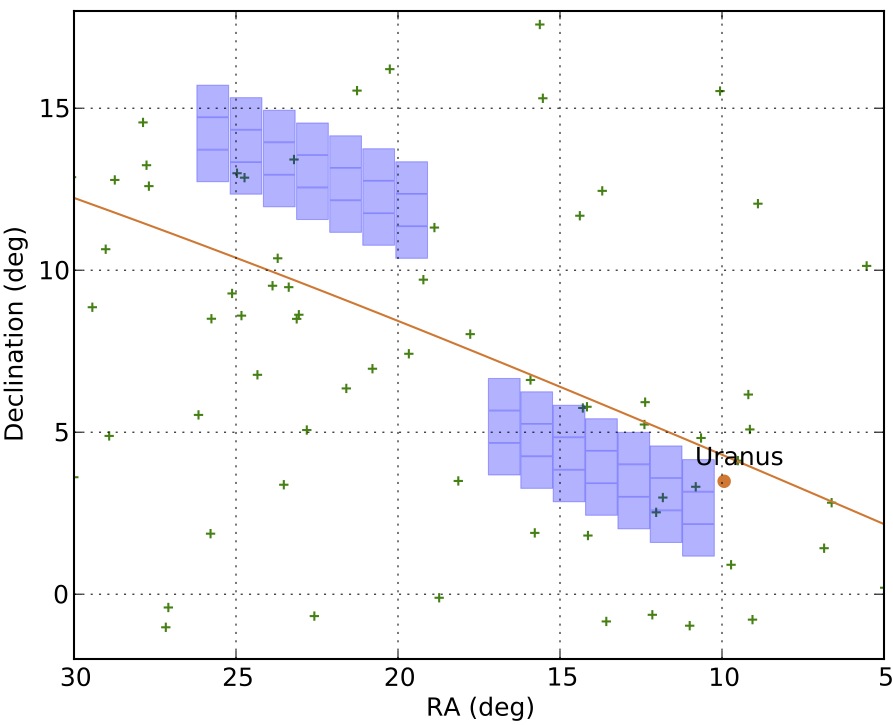Survey
from images to discoveries
Survey design
Started in February 2013, OSSOS is a four-year project using the MegaPrime camera, a 1x1 degree imager on the 3.6m Canada-France-Hawaii Telescope (CFHT). The repeated tracking observations required to determine orbits are also obtained with the MegaPrime camera.
Observations acquired by the survey are transferred to the Canadian Astronomy Data Centre (CADC) where they are transformed form RAW uncalibrated data into precisely calibrated observations and searched for outer solar system objects using the CANFAR cloud computing and storage system.
Orbit determination requires about ~16 months of observing.The first two survey fields were observed during the Northern spring of 2013. Each survey field is a 21 square degree area of sky. The location of the survey area on the sky is selected to maximize the detection of particular groups of trans-neptunian objects. A 2nd group of two 21 square degrees was acquired during the Northern autumn of 2013. The first year searched 84 sq deg of sky, with an expected depth of m_r = 24.5 to 40% detection efficiency, with 100% of the targets brighter than this limit tracked and recovered.
In each season a 7x3 block of fields will be positioned near the ecliptic plane and a second group of fields will be positioned off the plane. Each set of fields will be observed repeatedly throughout the semester (a few nights per dark run for 5 dark runs centered on the April/May dark runs for the on/off ecliptic fields).
These fields were then re-observed in 2014A to obtain a high-precision orbits on all KBOs detected in the field. The discovery triplet (near opposition) is the crucial portion, because this is the only place where the magnitude performance will be measured; tracking of objects with detection magnitudes brighter than the 40% efficiency should be >95%.
An extremely precise internal astrometric (and relative photometric) solution is created in each patch, tied to Sloan. This yields orbits of 0.1-1% semimajor axis uncertainty inside the first 5 months, and a factor of 10-30 better by the end of the second year. (RMS residuals are 30-50 milli-arcseconds for bright targets, and 80-100 for fainter ones).

OSSOS goes deeper than previous 4-meter class surveys due to both operations in queue mode and (after mid 2013) the IQ improvement provided by CFHT's dome venting (which will lower the median IQ from the current 0.72" to the range 0.6-0.65"). With a 40% detection efficiency at r-band magnitude 24.4-24.5, in the ecliptic OSSOS will yield something like 3-4 objects per square degree, with about half that sky density for the off-ecliptic fields.
